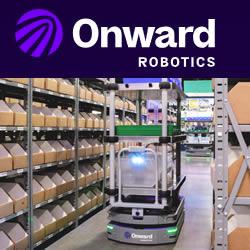IEEE Spectrum Tours NASA's Drone Research Lab
Microduino: Arduino Compatible Hardware The Size Of A Quarter
ABB Robotics Pack Expo 2013 Exhibit Highlights New 8kg IRB 360 Flexpicker
UAV Provides Colorado Flooding Assistance Until FEMA Freaks Out
Makeblock Aluminum Extrusion Construct Platform
The Open Hand Project
2012 Venture Funding Roundup From Hizook
Flutter: $20 Wireless Arduino With Half Mile Range.
Suitable Technologies Retains Willow Garage Talent to Further Develop Beam Remote Presence
JPL's RoboSimian
DALER: Walking Flying Robot
Robot Helps Museum Restore Paintings
Dronestagram
Johnny-Five JavaScript Arduino Framework
Snake Robots Deployed in Nuclear Power Plant
Records 1456 to 1470 of 1671
First | Previous | Next | Last
Featured Product

Onward Robotics - Meet Me Fulfillment Automation
Robotics and Automation - Featured Company

